 Leading Blog | Posts by Month |
 Leading Blog | Posts by Month |
07.30.08

Do You Need a Good Rationalization?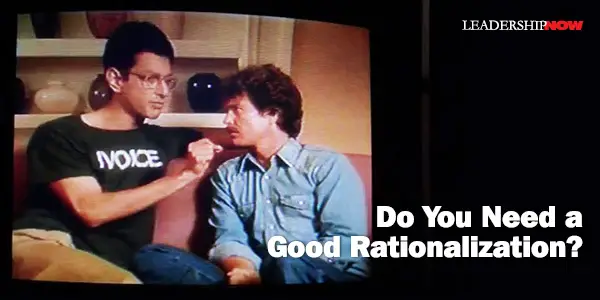
IT IS EASY for us to deceive ourselves. In The Big Chill, Jeff Goldblum’s character Michael Gold observed, “I don't know anyone who could get through the day without two or three juicy rationalizations.” How true. Rationalizations help us to justify thinking or behavior that we suspect is questionable in the first place. It blurs distinctions. Rationalizations are easy to see in others, but our own take a little more effort to label them for what they are. To aid us in this endeavor, Ronald Howard and Clinton Korver, authors of Ethics for the Real World, offer these tests to see if our thinking stands up to a little scrutiny. Other-Shoe Test. The age-old question: How would we feel if the shoe were on the other foot? Front-Page Test. Would we think the same was if it were to be reported on the front page of the Wall Street Journal? Or the New York Times? Or USA Today? Or the paper our hometown friends read? Biased-Language Test. Would we feel similarly if we replaced our value-laden language—euphemisms and cacophemisms—with value-neutral language? Role-Model Test. Would we do the same if our action exemplified the behavior we would expect from our children? Loved-One Test. Would we change our mind if the person on the receiving end of the ethical transgression were a loved one? Mother’s Test. And the simplest of all: what would our mother think? “If we show no interest in asking such questions, we are already on shaky ground.”
Posted by Michael McKinney at 04:26 PM
07.28.08

What Is Your Plan For Personal Growth?
YOU WON'T GROW to your potential without a plan. You’ll get older, but not better. Experience guarantees nothing. Growth is intentional. If you are not growing you’re just putting in time. Waiting. Crucibles of Leadership by Robert Thomas, is an important book that asks, “What is your personal learning strategy?” A PLS is “a highly individualized plan for leveraging hard-won insights about learning from adversity and using practice to improve performance.” We all have crucibles, but it’s what we do with them that is important. Thomas writes that crucibles “are like trials or tests that corner individuals and force them to answer questions about who they are and what is really important to them.” Crucibles become valuable when we intentionally mine them for lessons that make us more effective, aware and integrated. Warren Bennis points out in the foreword that the self-awareness we should gain is “the kind of deeper understanding of self that then turns outward rather than inward and results in better understanding of others and the organizations that matter to us.” Thomas says that we have to change our approach to learning. We shouldn’t wait for just the right moment to arrive, but learn in the moment—in real time—to, as he writes, “learn while doing.” Preparation is essential to learning. In order to take advantage of our crucibles, we must develop a Personal Learning Strategy (PLS). Thomas introduces a framework for crafting a PLS complete with exercises to help you properly move through each step. It begins with a little introspection—understanding why you want to lead, what motivates you to do so and understanding how you learn. Then you need to access your capability in three core areas: adaptive capacity, engaging others through shared meaning, and integrity. From here you can see areas where you need to improve and strengthen in order to reach your leadership goals. Now you can assign behaviors to each of these areas that you can consciously practice at work and at home. He suggests that you “scan your landscape at work and at home, and identify those instances and roles out of your comfort zone that will allow you to stretch into new behaviors, perspectives, and leadership capabilities.” Organizations too, can tap into the power of a PLS by adopting an experience-based approach to their leadership development program. Organizations need to recognize the importance of crucible experiences and provide the resources people need to extract insight from them in addition to the regular technical and skills training people should be receiving. Most often those resources involve creating a process that links the two learning opportunities together. One important note on a trap that people and organizations sometimes fall into in their zeal to develop character and leadership, Thomas writes, “We create enough pressures to perform that we don’t need to invent new ones just so that we can accelerate leader development. The trick is to harness the crucibles that life sets in motion so the opportunity for learning is not squandered.” Life gives us enough opportunities to learn, but often, we just need help getting the lesson we should be getting from it. Accomplished leaders say that experience is their best teacher. They learned their most meaningful and important leadership lessons—lessons that they’ve integrated into their own leadership style—through crucibles. These were critical events and experiences, times of testing and trial, failure more often than grand success, that grabbed them by the lapels and demanded to know “What do you stand for?” and “What are you going to do?” A situation arose that did not respect age, gender, generation, nationality, talent, or charisma; all it asked was that the person step up and be someone or do something they’d never been or done before. Having a Personal Learning Strategy is a way of thinking about and looking at life that allows you to proactively grow from what life throws at you, rather than being knocked out by it. You need a Personal Learning Strategy. 
Posted by Michael McKinney at 02:06 PM
07.25.08

Leadership Wallpapers for Your Smartphone or Desktop We have created a selection of leadership wallpapers that you can download to your computer desktop. Currently, we have eleven images and quotes from the Great Leaders Series like the two shown below. 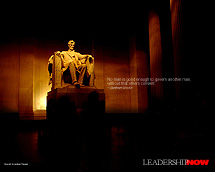 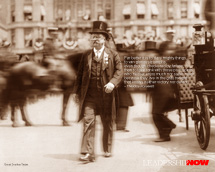 You will also find wallpapers for your smartphone like those shown below. 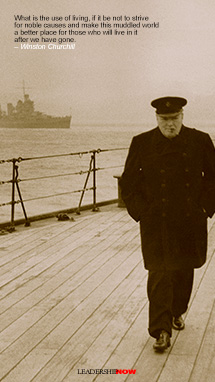 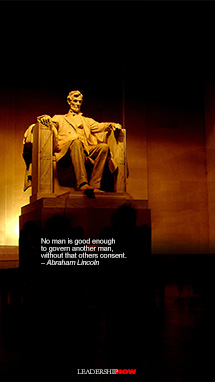 We hope you find them useful. Any comments or suggestions are welcome.
Posted by Michael McKinney at 06:08 PM

The World is Flat Audiobook Giveaway  With the No. 1 bestseller The World Is Flat, Thomas L. Friedman helped millions of readers see and understand globalization in a new way. Now you can have it for free. With the No. 1 bestseller The World Is Flat, Thomas L. Friedman helped millions of readers see and understand globalization in a new way. Now you can have it for free.
From now until August 4th, you can download the audiobook version of The World Is Flat and receive an exclusive audio preview excerpt of Friedman's new book, Hot, Flat and Crowded: Why We Need a Green Revolution and How It Can Renew America to be released on September 8th. If you'd like to receive these free audio downloads, sign up at the following address: http://www.thomaslfriedman.com/giveaway
Posted by Michael McKinney at 05:54 PM
07.23.08

Seeing What No One Else Thought
PRESIDENT of Johns Hopkins University, William Brody, delivered a commencement address to Johns Hopkins University earlier this year, where he stresses the importance of examining our premises. He makes his point with this example: People have a tendency to hold tight to wrong ideas, even when there is ample evidence to the contrary. Julius Caesar observed this two thousand years ago, when he wrote that men “willingly believe what they wish.” An example from my own schooling: when I was a medical student, we were taught that ulcers in the stomach were due to too much acid secretion. Ulcers were the result of acids—this was the established dogma. It was a concept that survived, even in the face of contrary evidence. Keep an open mind. He adds, “It’s OK to question ideas and beliefs other people insist are true.”
Posted by Michael McKinney at 08:40 AM
07.21.08

Mandela: His 8 Lessons of Leadership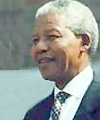
I thought the eighth lesson – Quitting is leading too – was an important point. Moving in a new direction from what has or hasn’t been working is usually a very difficult thing to do, but often necessary in order to stay relevant. The full article is full of great antidotes from the life of Mandela. Nelson Mandela celebrated his ninetieth birthday last week.
Posted by Michael McKinney at 10:25 PM
07.18.08

Learning Is the Work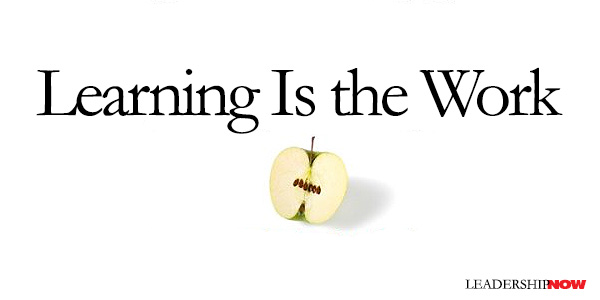
MASTER choreographer Twyla Tharpe has said that you practice while you perform. Or to put it another way, learning while you work. Professor Michael Fullan wrote in The Six Secrets of Change that “consistency and innovation must go together, and you can achieve them through organized learning in context.” It’s “the integration of the precision needed for consistent performance (using what we already know) with the new learning required for continuous improvement.” This requires a thorough understanding is what you are doing and the critical tasks that make that happen. By first nailing down the “common practices that work so that you can get consistent results” you are “freeing up energy for working on innovative practices that get even greater results.”He writes that at Toyota, where every manager is a teacher first, learning is the job. It is a culture where people learn from experience. Through performance, we learn what works and what does not. “In Toyota’s culture, as in all cultures where learning is the work, the trainer is always responsible for the student’s success; if the student struggles, the trainer knows it is time to change the approach….Learning on the job is explicit, purposeful, and ubiquitous in these cultures.” It is our job to create a learning culture where what we know is diligently and consistently applied, while we are diligently and consistently seeking at the same time, how to get better at what we do. As continuous learning is critical to leadership success, these concepts have applications in our personal lives as well. (This is the subject of Crucibles of Leadership, a great book by Robert Thomas.) Leading and learning are inextricably linked. 
Posted by Michael McKinney at 07:39 AM
07.17.08

Out of Context: The Power of Adversity"We are not meant, in the grand scheme of life, to be happy and comfortable. Rather we are meant to forge our characters on the anvil of adversity... Most of us experience monumental periods of adversity—to burn away our self-deception. These devastating setbacks propel us in our quest to become fully and creatively human. Sometimes we get stuck, so stuck, in fact, that only great pain will impel us to move. It's then that the power of adversity is revealed. But to see it requires a new way of looking at the world, a radical shifting of perspective. The walls of your adversity might seem too high to scale. Never mind. Don't look up and don't look down. Look straight ahead, find that first foothold, and climb. Soon that wall will become merely a stepping stone to the next phase of your life—and (surprise!) your next adversity. At that time recall the concept of sweat equity and realize that when you leverage your learning from adversity past and present there is no failure and no wasted time." —Al Weatherhead and Fred Feldman, The Power of Adversity
Posted by Michael McKinney at 07:19 AM
07.16.08

The Four Rules of Influence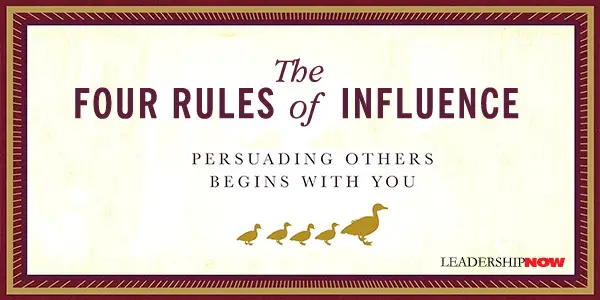
CHRIS WIDNER’S book, The Art of Influence, gives the proper emphasis regarding the topic of influence. He says in this entertaining short story that influence is a gift followers give you because you have become the kind of person they want to follow and be influenced by. He provides four rules of influence:

Posted by Michael McKinney at 12:07 AM
07.14.08

Newswire: July 14, 2008 Facilitating Organizational Change
Posted by Michael McKinney at 07:59 PM
07.09.08

Focus Like a Laser BeamWe all know that when we focus on something we leverage our efforts. Success Magazine founder Orison Swett Marden, wrote, “Every great man has become great, every successful man has succeeded, in proportion as he has confined his powers to one particular channel.” But focusing, determining exactly what to focus on, and focusing on our strengths to make a tangible contribution, isn’t as easy as it sounds. Simplifying your life by eliminating as many of those things that take an inordinate amount of time and don’t contribute substantially to your goals is sometimes a very difficult thing to do. Yet it is important to keep in mind that habits drive most of what we do, the ways we react and respond and so we need to constantly review what we are spending our time doing.In her very practical book, Focus Like a Laser Beam, Lisa Haneberg writes, “Leaders need to know what laser focus looks and feels like. The first and most obvious sign of focus is that everyone knows what’s important.” To do this, people need to know what’s relevant. “When you define success, you define relevance.” She offers four questions to apply when trying to define relevance:
Lisa maintains a blog about the craft of management and leadership called Management Craft.
Posted by Michael McKinney at 10:32 AM
07.07.08

5 Leadership Lessons: Transparency
Posted by Michael McKinney at 10:18 PM
07.06.08

Cast a Vote For the Best Leadership Blog Kevin Eikenberry's 2nd annual Best of Leadership Blogs competition is underway. This blog has again been nominated as one of the 10 best leadership blogs on the web. Review the other great finalists here. We appreciated all the support we got last year, so again, if you like what you've been reading here, then cast your vote for the Leading Blog by July 31. The 2008 winner will be announced August 4 on Kevin’s Blog and in his weekly newsletter, Unleash Your Potential. As a bonus for participating, a randomly drawn voter will be given a three month membership in the Remarkable Leadership Learning System. Thanks for the vote!
Posted by Michael McKinney at 08:02 AM
07.04.08

John Adams - We Live, My Dear Soul, in An Age of Trial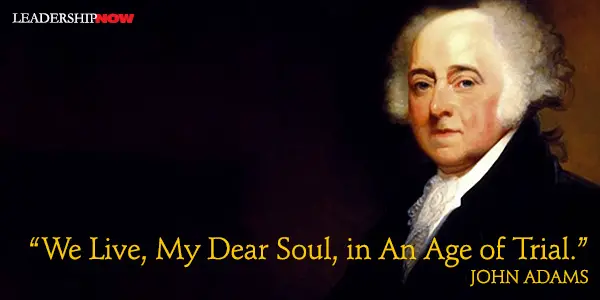
JOHN ADAMS has always been an American hero, but never a popular one. Despite having been one of the principal architects of American independence, Adam’s believed that “Mausoleums, statues, monuments will never be erected to me.” Adams guided and shaped – managed really – the revolution. Perhaps it was this fact – his involvement in all aspects – that is the reason he never stood out as much as some of his contemporaries in American history. In Revolutionary Management, Alan Axelrod writes that Adams was a man of nuance. It was an aspect of his character that “makes it so difficult for Americans to transform him into a one-dimensional icon.” Adams saw his task differently. He “believed that his task was both to incite and to control human passion….Tear down, by all means, yes. But tear down only that which separates Americans from their rights….Adams wanted to elevate the revolution above personal revenge and above the realm of mere human passion. He wanted to make it an exercise of law.” We can be thankful for that. In assessing Adams’ life, one is struck by his sense of duty. You can sense this in this famous quote taken from a letter to his wife Abigail in 1780: “I must study politics and war that my sons may have liberty to study mathematics and philosophy, geography, natural history, and naval architecture ... in order to give their children a right to study painting, poetry, music, architecture, tapestry, and porcelain.” He was a man that we would term authentic. He had the will and the courage to integrate action and belief. Personal responsibility was key. John Gardner once wrote, “The citizen can bring our political and governmental institutions back to life, make them responsive and accountable, and keep them honest. No one else can. The one condition for the rebirth of this nation is a rebirth of individual responsibility.” 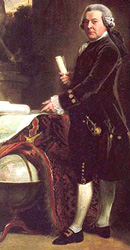 More on John Adams:

Posted by Michael McKinney at 11:16 AM
07.01.08

Leadership Books: July 2008Here's a look at some of the best leadership books to be released in July.




Posted by Michael McKinney at 06:00 AM
|
BUILD YOUR KNOWLEDGE


How to Do Your Start-Up Right STRAIGHT TALK FOR START-UPS 
Grow Your Leadership Skills NEW AND UPCOMING LEADERSHIP BOOKS 
Leadership Minute BITE-SIZE CONCEPTS YOU CAN CHEW ON 
Classic Leadership Books BOOKS TO READ BEFORE YOU LEAD |
|